Recommended Routes
Around Mysterious Stone Structures (Asuka Village, Nara Prefecture)
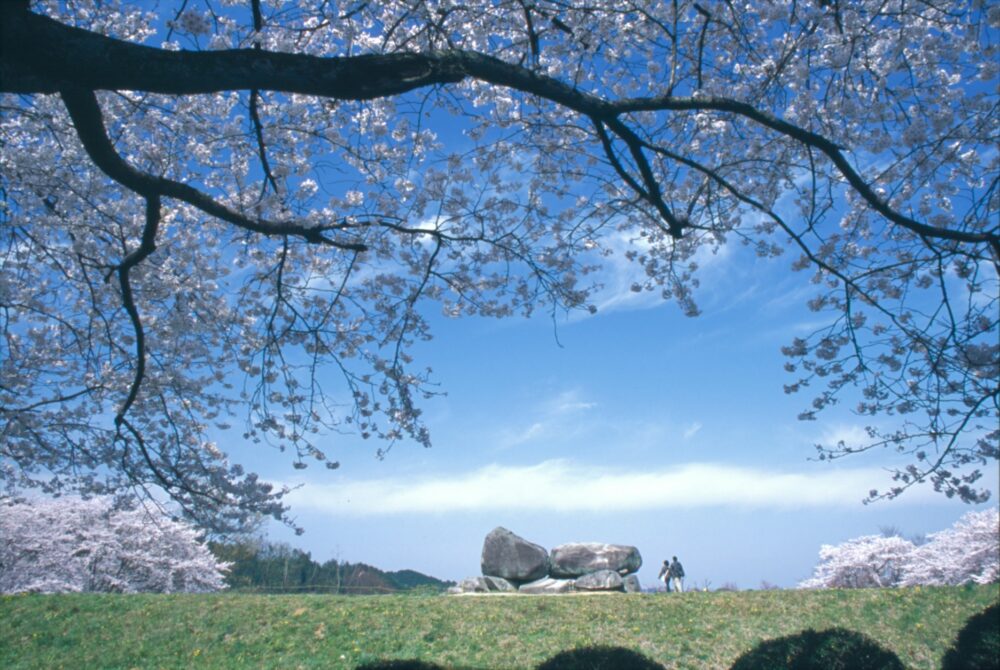
Asuka village was the center of Japan around the 5th century. Buddhism was brought there and developed. There are historic sites of the Court, temples, ancient tombs, buried cultural assets, and important historical cultural heritages such as mountains, rivers, and so on that are mentioned in the “Manyoshu (poetic anthology).” You can enjoy the characteristic historical atmosphere of thousands years ago.
Video
Asuka, a sacred place of ancient history, is also a completely unknown place for two people who have nothing to do with history. What is the Ishibutai Kofun Tumulus? How was it built without heavy machinery? What is the love story behind the stepping stones over the Asuka River? We will spend a day enjoying the clear autumn weather in Asuka Village.
Access
How to get there - By train How to get there - By car
From Osaka
Change to the Kintetsu Yoshino Line at Osaka-Abenobashi Station and get off at Asuka Station. Limited Express: Approx. 40 min, Express: Approx. 45 min.
How to get there - By car
From Osaka
Change to the Kintetsu Yoshino Line at Osaka-Abenobashi Station and get off at Asuka Station. Limited Express: Approx. 40 min, Express: Approx. 45 min. From Osaka
Take Nat’l Rt. 24 south towards Kashihara from the Yamato Koriyama IC of the Nishimeihan Expressway. Take Nat’l Rt. 169 south from Kashihara. (Approx. 60 min from Yamato Koriyama IC)
Route
- Kintetsu Asuka Stationby bicycle
- Asuka Historical National Government Park Hallby bicycle
- Takamatsuzuka Tumulusby bicycle
- Kameishi Turtle stoneby bicycle
- Tachibanadera Templeby bicycle
- Ishibutai Tumulusby bicycle
- Asukadera Templeby bicycle
- Nara Prefecture Complex of Manyo'yo Cultureby bicycle
- Mizuochi iseki Ruinsby bicycle
- Kintetsu Kashiharajingumae Station
Highlights
-
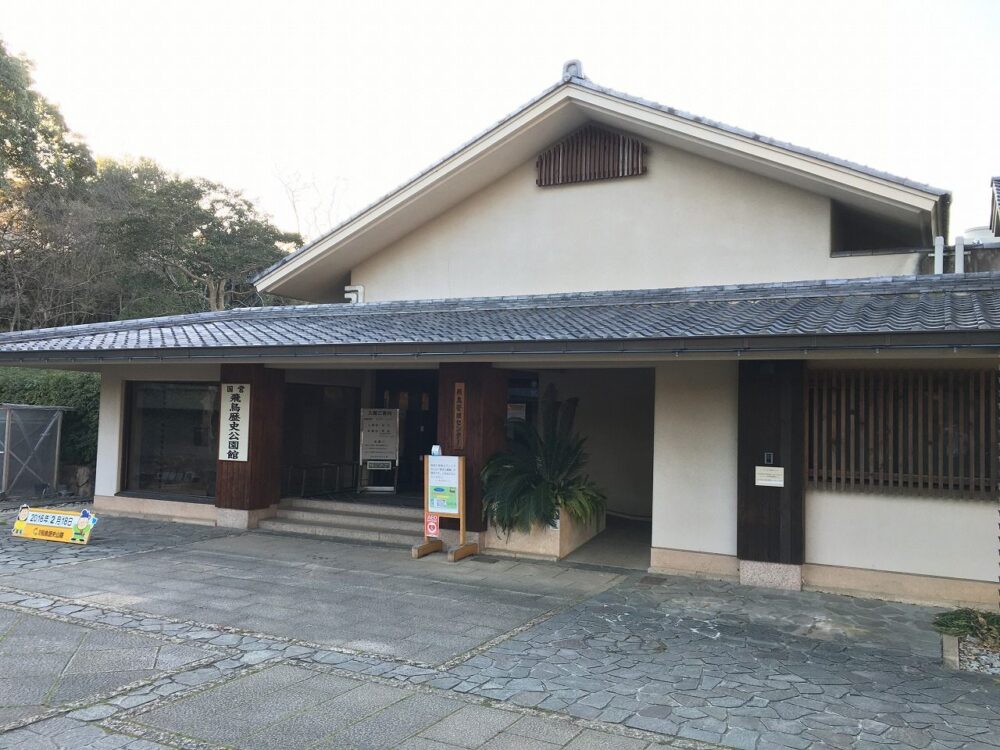
Asuka Historical National Government Park Hall
There is a convenient source of information about sightseeing in the Asuka area.10 minutes from Asuka Station (Kintetsu, Yoshino Line) on foot.
-
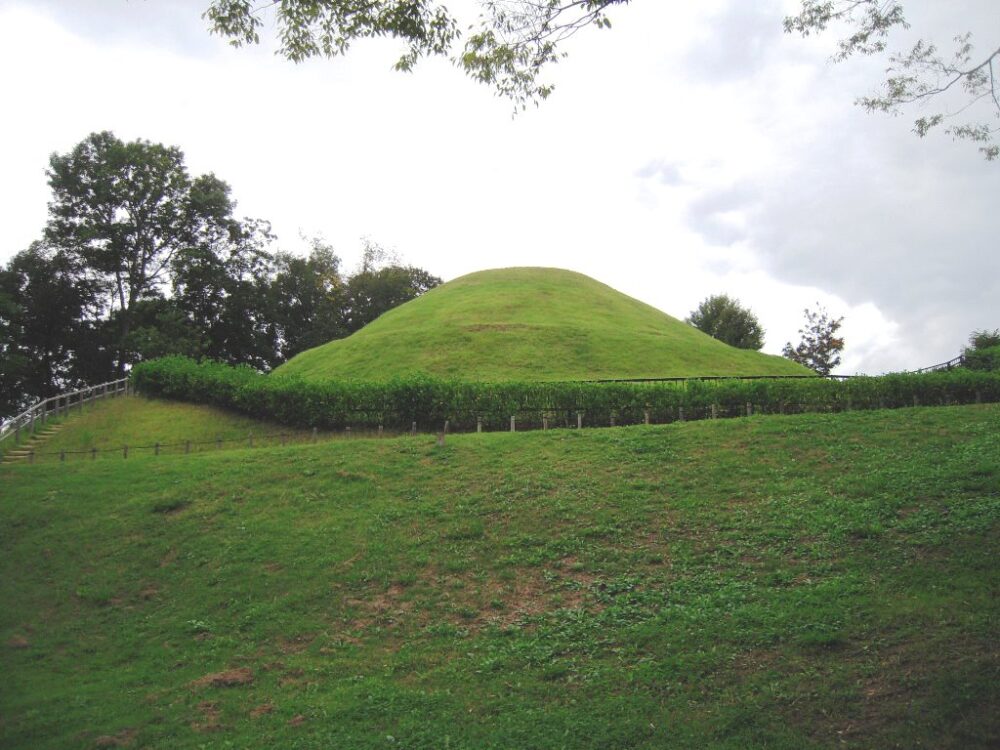
Takamatsuzuka Tumulus
This tumulus is a terminal period burial mound from the end of the 7th century to the beginning of the 8th century that represents the burial mounds of Asuka. It is a two-tiered round burial mound with a diameter of 23m (lower) and 18m (upper) and a height of 5m. Excavation in 2005 confirmed that it was built during the Fujiwara-kyo period (694-710).
The interior of the stone chamber is influenced by ancient Chinese Taoism, with a Blue Dragon and a Sun statue on the east wall, a White Tiger, and a Moon statue on the west wall, Black Tortoise on the north wall, Human Figures on both sides of the east and west, and a Star Chart is drawn on the ceiling. The person buried here is believed to be a tall prince from the 7th or 8th century, but the details are unknown. -
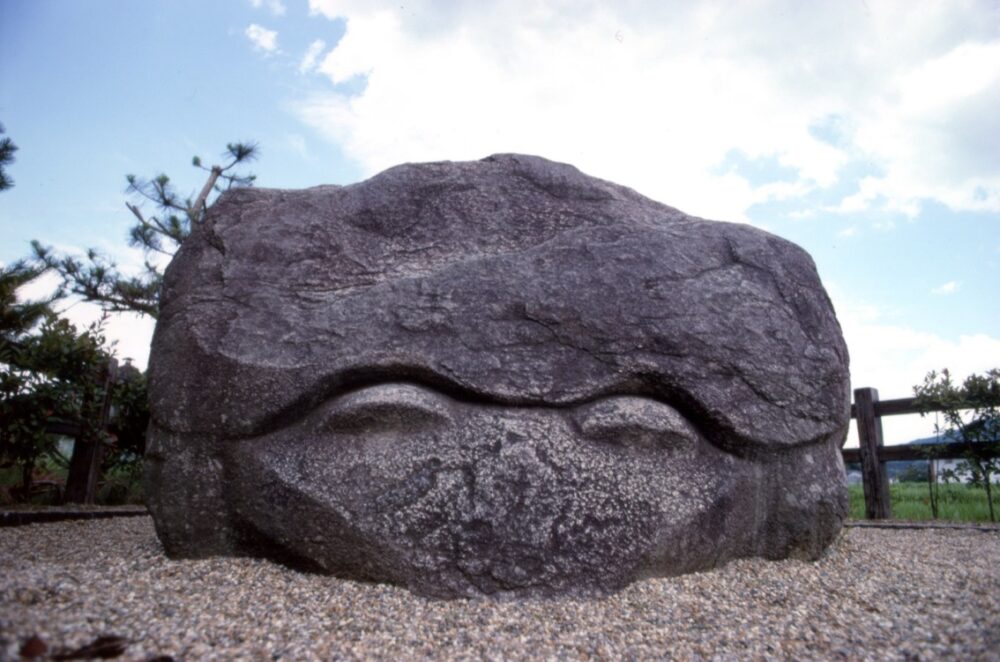
Kameishi Turtle stone
This stone is one of the mysterious stones in terms of usage and production period that represent Asuka period with a lovely smiling expression.
Huge granite stone is 3.6m long, 2.1m wide, and 1.8m high, and is called Kameishi (turtle stone) because the carving on the bottom resembles an animal face, tortoise.
From the location where it is placed, it is speculated that it was a decorative stone related to Tachibana-dera or Kawara-dera, or that it was a boundary of something, or that it represents folk beliefs before the arrival of Buddhism.
Kameishi is said to be a memorial for a turtle that died when the lake dried up due to the action of a snake. There is also a frightening legend that says that when a turtle faces west, the entire Yamato nation will sink into a sea of mud. -
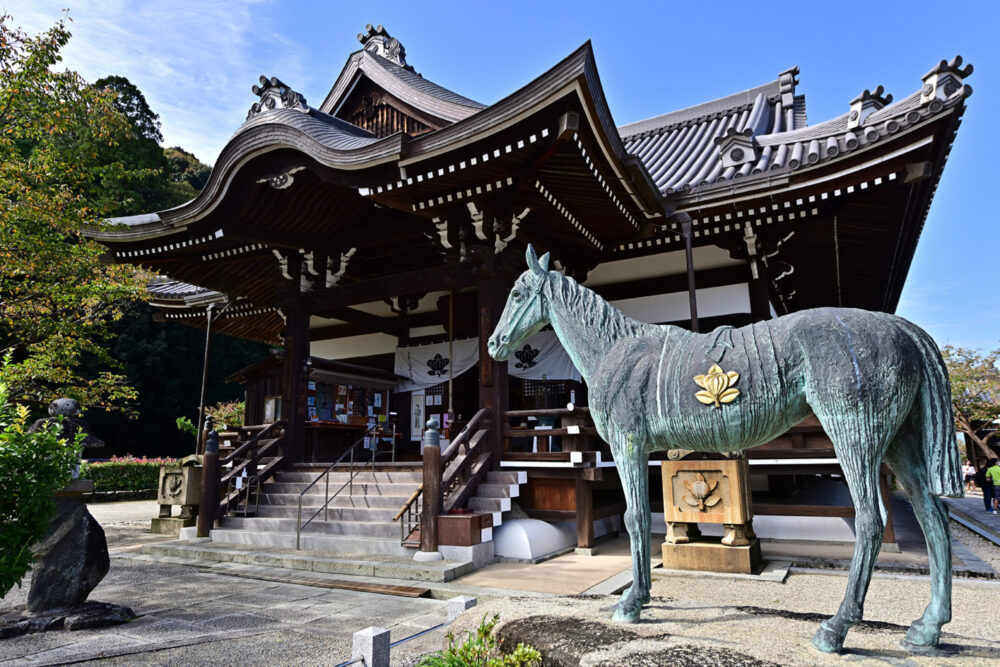
Tachibanadera Temple
Founded in AD606, this temple is built on the site believed to be the birthplace of Prince Shotoku, who was a strong supporter of Buddhism in Japan. Most of the temple was rebuilt in the Edo period. Within the complex, there is a mysterious stone, about 1 meter high, which predates the buildings, called the Nimenseki. Carved with the face of a man and a woman, it is thought to represent the two faces of humanity: good and evil.
-
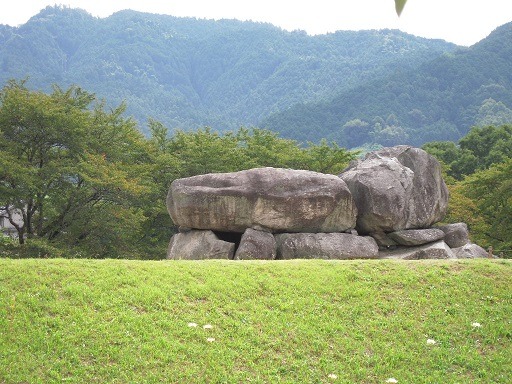
Ishibutai Tumulus
This is an ancient burial mound with one of the largest horizontal stone chambers in Japan, and is estimated to have been built around the beginning of the 7th century.
It was originally a square burial mound with a side of about 50m, but the embankment on the top of the burial mound has been lost, and now a huge stone chamber is exposed.
Approximately 30 large and small granite stones are used, and the largest stone is estimated to weigh approximately 77 tons, with a total weight of 2,300 tons. It is unknown who was buried in this Ishibutai Kofun, but it is said that there is a high possibility that Soga no Umako, who was in power here in the latter half of the 6th century is buried. -
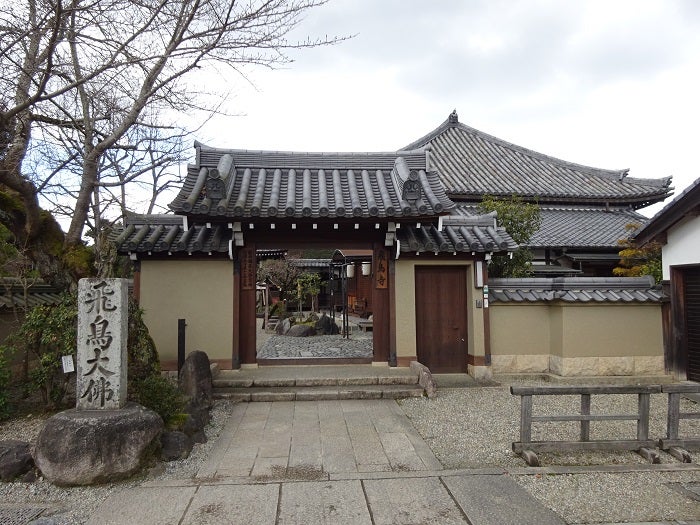
Asukadera Temple
Built in 596 by order of Soga no Umako, who protected Buddhism, this is Japan's oldest authentic Buddhist temple.
The principal image of worship, the seated statue of Shaka Nyorai (Important Cultural Property), was made in the Asuka period. It is known as the Asuka Daibutsu (Great Buddha of Asuka), the oldest Buddhist statue in Japan.
A fire in the Kamakura period destroyed most of the temple, leaving only the castle tower and cornerstones of the main hall. The current main hall was rebuilt in the Edo period. -
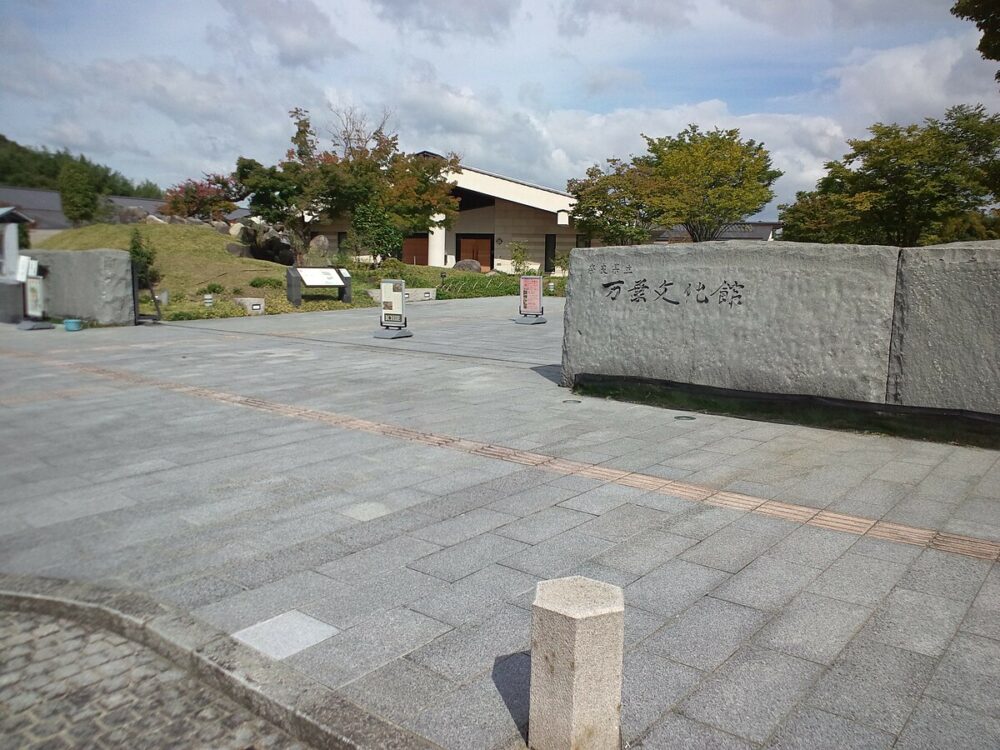
Nara Prefecture Complex of Manyo'yo Culture
This facility allows visitors to experience the ancient culture of 1,300 years ago, centering on the Manyoshu anthology, through dioramas, images, and music. Also on display are a collection of “Manyo Nihonga” paintings by representative Japanese artists using the Manyoshu as a motif.
Fee :Free for general exhibition rooms and special exhibition rooms / exhibition admission fee is charged Opening hours: 10:00 - 17:30 (admission until 17:00)
Closed: Wednesdays (or the following day if Wednesday is a national holiday), open on September 15. Year-end and New Year holidays, exhibition change days
-
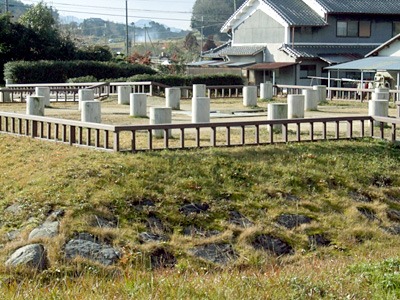
Mizuochi iseki Ruins
Nakano Oeno Oji and Tenchi emperor made the first clock in Japan. The ruin is a mark of the clock. Near Asukagakkoumae bus stop (Nara Buses).
